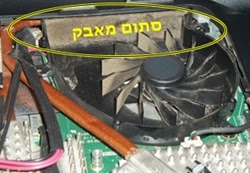Troubleshooting Computer Cooling Problems: Keeping Your System Cool
Introduction:
Proper cooling is essential for maintaining the optimal performance and longevity of your computer. Overheating can lead to system instability, reduced performance, and even hardware damage. In this article, we will explore common computer cooling problems and provide troubleshooting tips to keep your system cool.
Signs of Cooling Problems:
Identifying potential cooling issues is the first step in addressing the problem. Look out for the following signs:
a. Increased Fan Noise: If you notice that the fans in your computer are running louder than usual, it may indicate that they are working harder to cool the system.
b. System Shutdowns or Freezes: Overheating can cause your computer to shut down or freeze unexpectedly, especially during resource-intensive tasks.
c. Performance Degradation: If you notice a significant drop in system performance or increased lag during regular usage, it could be due to overheating.
Cleaning Dust and Debris:
Dust accumulation can hinder airflow and contribute to overheating. Perform the following steps to clean your computer:
a. Power Off and Unplug: Before cleaning, shut down your computer and unplug it from the power source.
b. Open the Case: If you have a desktop computer, carefully open the case using the manufacturer's instructions. For laptops, consult the user manual or seek professional assistance.
c. Compressed Air: Use compressed air to blow out dust from the fans, heat sinks, and other components. Pay particular attention to the CPU and GPU heatsinks.
d. Clean Filters and Vents: Check if your computer has dust filters or vents and clean them thoroughly. These areas are prone to dust buildup and can restrict airflow.
e. Reassemble: Once cleaning is complete, securely close the case and ensure all screws and connectors are properly tightened.
Optimizing Airflow:
Proper airflow is crucial for effective cooling. Consider the following steps to optimize airflow within your computer:
a. Cable Management: Organize and route cables neatly to avoid blocking airflow. Use cable ties or clips to secure cables and keep them away from fans and components.
b. Fan Placement: Ensure that your computer's fans are correctly installed and positioned for optimal airflow. Consult the manufacturer's guidelines for fan placement.
c. Add Case Fans: If your computer has space for additional case fans, consider installing them to improve airflow. Ensure they are properly aligned with intake and exhaust airflow.
d. Consider Liquid Cooling: For high-performance systems, liquid cooling solutions can provide efficient heat dissipation. Consult with a professional or follow manufacturer instructions for installation.
Monitoring Temperatures:
Regularly monitoring your computer's temperatures can help identify cooling problems before they cause significant damage. Use temperature monitoring software to track CPU and GPU temperatures.
Check and Update Drivers and Firmware:
Outdated drivers and firmware can cause compatibility issues and lead to increased heat generation. Visit the manufacturer's website and ensure that all drivers and firmware are up to date.
Elevated Laptop Cooling:
Laptop cooling can be challenging due to their compact design. Consider using the following accessories to help cool your laptop:
a. Laptop Cooling Pad: A cooling pad with built-in fans can help improve airflow and reduce heat buildup.
b. Elevate the Laptop: Place the laptop on a flat, elevated surface to allow better airflow underneath the device.
Seeking Professional Help:
If your computer continues to experience cooling problems or if you're uncomfortable performing troubleshooting steps, it's recommended to seek professional assistance from a certified technician or authorized service center.
Conclusion:
Computer cooling problems can significantly impact system performance and longevity. By addressing cooling issues promptly and following the troubleshooting steps mentioned
Prices
Prices for laptops and desktops are different. Some can be easily cleaned or fixed by opening the bottom cover of your computer. Others need to be completely disassembled to gain access to the fan or laptop cooling system.
Best of all, bring your computer to us for free diagnostics and we will let you know exactly what to do and how much it will cost. Usually Common laptop we charge 2500 Rupees for full service
Contact us by email or call us, and we will get back to you as soon as possible.






No comments:
Post a Comment